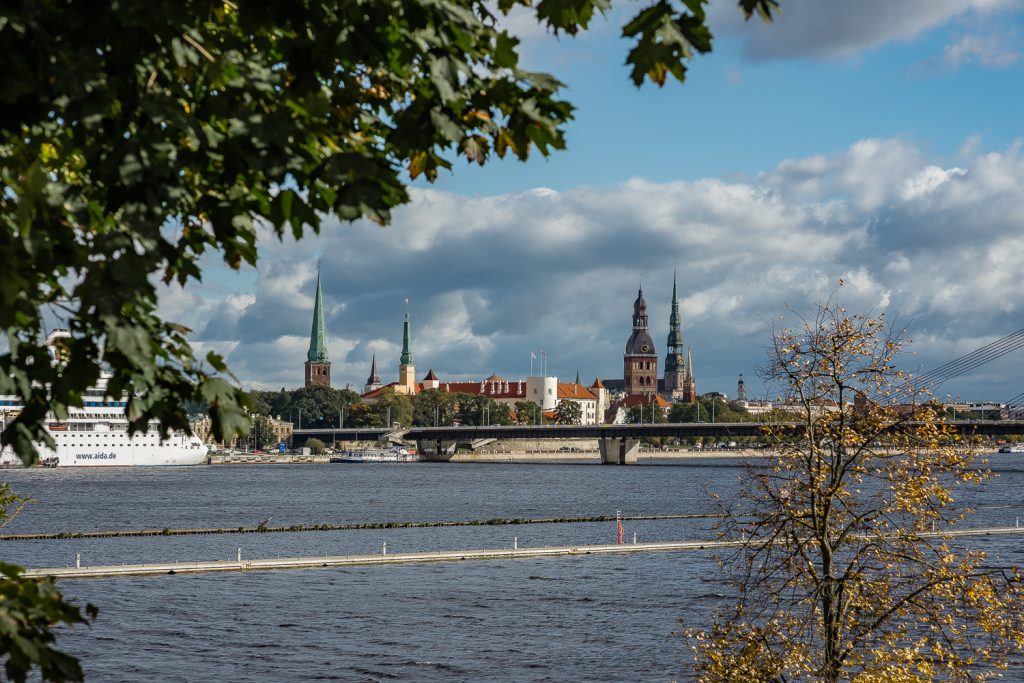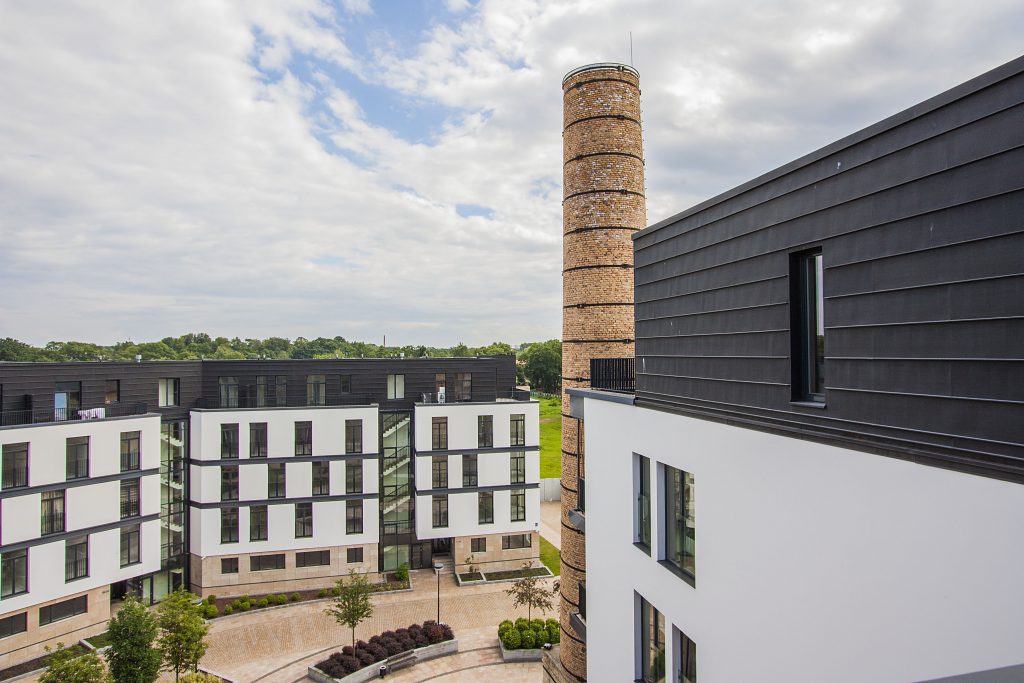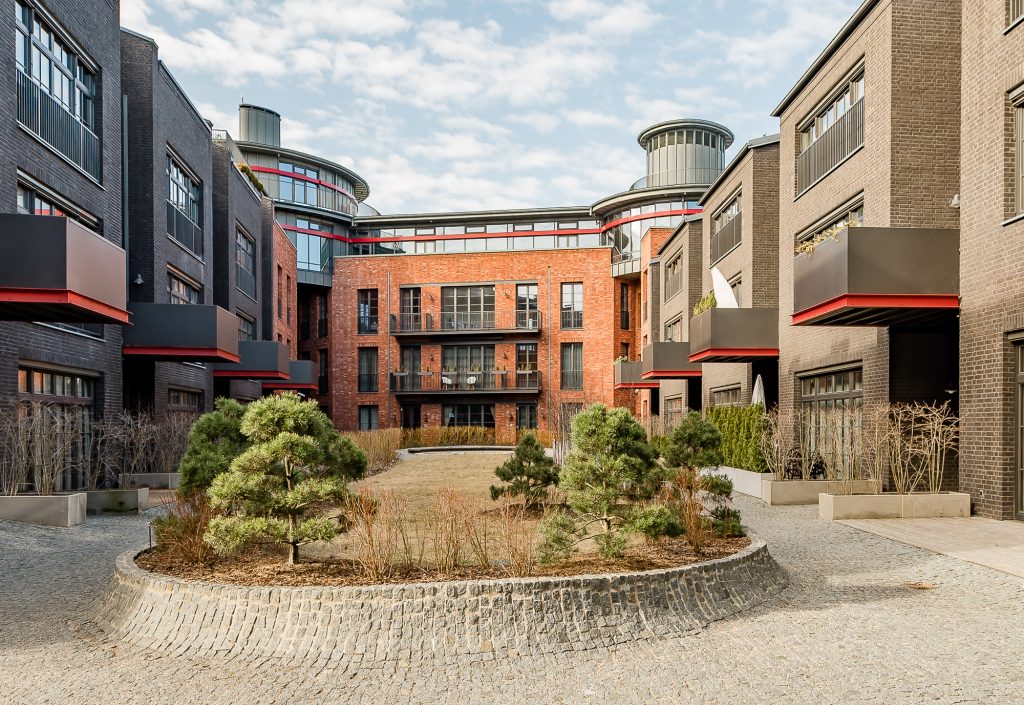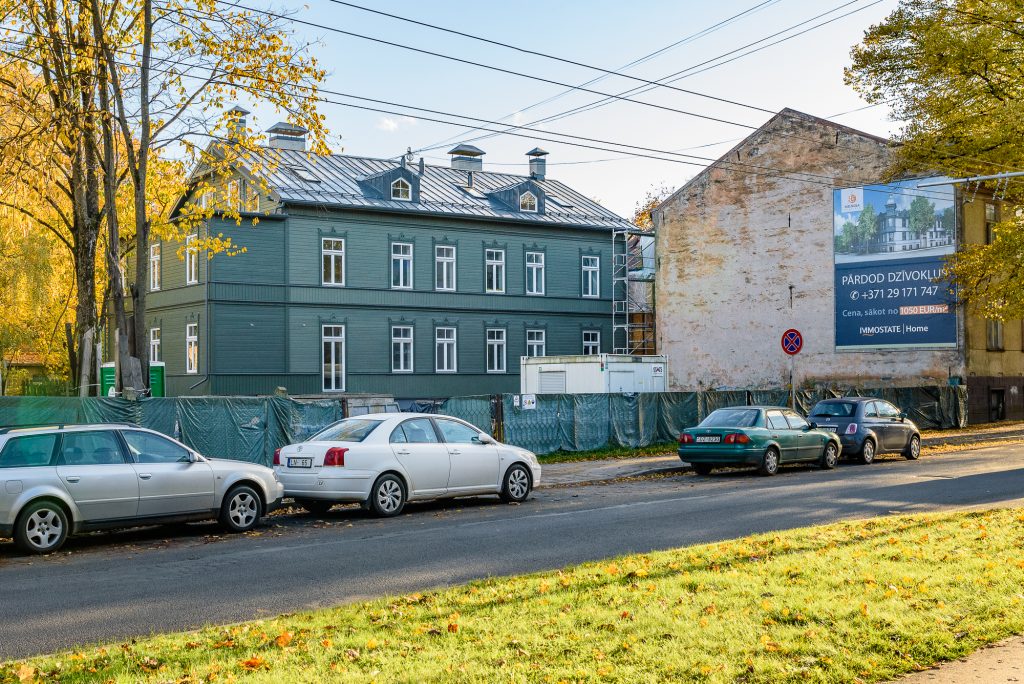Agenskalns neighbourhood in Riga, Pardaugava, has gained in popularity as a residential area during the last years. It is now in the 4/5th place on the list of Top 10 most popular districts of Riga. This is due not only to the particular aura of the place present in the lime-tree lined streets and numerous parks, where buildings of architectural styles of different epochs sit side by side with modern housing projects. It is also the result of it being an area of excellent accessibility: the centre of the capital city can be reached quickly even by foot.


Sales Associate of “Baltic Sotheby`s International Realty” Evija Zalite (Evija Zālīte) introduces us to Agenskalns, its advantages and history.
The witness to the infancy of Riga
There is a saying about the origins of Agenskalns: it watched Riga growing for centuries before it became a part of the city. Pardaugava as a suburb of Riga came into being rather late. Until the 15th century it was nothing but meadows, later manors of Riga’s burghers and church authorities were built there. The name Agenskalns is derived from the name of the manor owned by Heinrich von Hagen, who was a judge in the 17th century (later known as Svarcmuiza). Under the rule of Russian Tsars the district was named Hagensberg (from German), which later became Agenskalns and is used to our day. In 1786 Hagensberg became a part of the third suburb of Riga. At the time it was mainly inhabited by plain folk: members of Latvian trade supplementary crafts and hired laborers. At the end of the 18th century Agenskalns became a recreational area with manors of the prosperous inhabitants of Riga, including German burghers.
The map of Pardaugava and road construction drawings of 1824 indicate a rebirth of the district. In 1788 there were only 112 buildings in Agenskalns, but in 1853 it had 294 plots of land with buildings. One of the most densely populated areas with many buildings was situated along the street, which was later named Legera (Nometnu) Street and led to Mara’s Mill. On both sides of Nometnu Street, following the uneven relief of dunes a branched network of twisted side streets developed rather chaotically. In our day this oldest uninterrupted built-up area of Pardaugava dating back to the 18–19the century (the area bordered by Nometnu, Slokas, Eduarda Smilga and Talsu Streets) with the old network of streets is a national monument of urban construction – “Pārdaugavas apbūves fragments” (A Section of the Built-up Environment of Pardaugava).
A thick cultural strata
Buildings at Agenskalns have suffered considerably at times: burnt down during wars, then rebuilt. Thus buildings preserved to our day are mainly built in the period beginning in the first half of the 19th century, but at the end of the 19th century the construction of apartments for rent began in Agenskalns that would satisfy the needs of the modest inhabitants of suburbs. People, who worked at the nearby factories, lived there for the most part.
Architectural styles from various epochs can be seen in the buildings at Agenskalns. All architectural styles of the 19th and 20th century can be found there: echoes of the Classicism, Eclecticism, Art Nouveau, the National Romantic style and examples of Soviet and contemporary architecture. There are not many places in Riga with such a great number of monuments of wooden architecture together as there is at Agenskalns.
The magic of Agenskalns has attracted people in the past too. Many prominent Latvians have lived there once: the patriarch of the theatre Eduards Smiļģis walked these cobblestone streets, the poet Ojārs Vācietis was “visited by his Muse” walking Agenskalns and the banks of Mara’s Pond. There O.Vācietis felt the presence of Krišjānis Barons, Rainis, Aspazija, Plūdonis, Akuraters, Brīvzemnieks, Merķelis, Dārziņš and many other great people, who had once lived at Pardaugava. So thick is the cultural strata of Pardaugava.
A district undergoing rapid change today
In the course of the last few years Agenskalns has become one of the most sought after residential districts of Riga and has won the 4/5th place on the list of Top 10 districts of Riga (based on business activity).
During the last year demand for housing in this neighbourhood increased and new real estate was put on the market. According to the State Land Service data on business activity at Agenskalns in 2017 and the year before, summarised by “Baltic Sotheby`s International Realty” 24 apartment sales from EUR 150 000 (premium segment) took place. For comparison: in 2016 in this attractive neighbourhood of Pardaugava 22 apartment sales transactions were concluded for the amount from EUR 150 000, most of them — 20 transactions — as a part of the first stage of “Māras dārzi” project (Liepajas Street 2). In 2016 and 2017 the total of the three premium segment private housing sales transactions were recorded (from EUR 150 000).
The neighbourhood is very popular among the local buyers of real estate, especially among families with children, who purchase real estate in the renovated buildings and in new projects too. Agenskalns has a variety of real properties to offer: those who value history will find there renovated monuments of wooden architecture, including premium segment properties and the so called medium segment housing. In contrast to other suburbs of Riga standalone wooden buildings with few stories still dominate Agenskalns. Thus a characteristic feature of the district are numerous buildings with few apartments. These buildings are small with few (two, up to 10) apartments. In response to the growing demand on the market project developers implement new housing projects and the neighbourhood of Agenskalns experiences rapid growth with a forecast of future potential.
Residential building projects close to locations with picturesque views by the Daugava, adjoining the “classical” boundaries of Agenskalns, for example, the project “Ģipša fabrika” on Kipsala or “River Breeze Residence” on Kliversala, or project “Philosophers’ Residence” are more oriented on the so called higher comfort level or luxury apartment customers. Among them are local buyers and employees of foreign companies and embassies. Prices of fully finished apartments in such projects begin from EUR 2500 per m².
Noteworthy is also “Melnsila Kvartāls” undergoing renovation in the neighbourhood of Kalnciema Street with historical wooden buildings. This charming project with two residential wooden buildings with few stories have been renovated under the project and the construction of a modern residential building is scheduled in proximity to them, which will fit in harmoniously with the existing wooden architecture. Alises Street building erected in 1899 according to the project of the architect Edgars Voldemars Frizendorfs (Edgars Voldemārs Frīzendorfs) now beautifully renovated is not far away. The building has historical charm. And there is also a completely new project “KALNCIEMA KVARTĀLA Rezidences”. It is a former factory now turned into a contemporary living quarter with a unique concept of common premises, a sports club and a recreational area for children.
The offer of residential apartments is further supplemented by the unusual project “Promenāde” on the left bank of the Daugava parallel to Mukusalas Street and the promenade, which is being built along the Daugava. Two industrial buildings with many modern offices in the proximity are being overhauled into buildings with loft apartments, which have all the indications of a high quality residential environment.
Young professionals have taken a liking to the project “Māras dārzi” located on the grounds of the former factory “Aurora”, on the banks of the picturesque Mara’s Pond. Under the first stage of the project all apartments (around 154) have been sold, however, presently the second stage of the project development takes place, which envisions building over 50 new apartments. In such medium segment housing projects the price of fully finished apartments is approximately EUR 1700 per m².
Agenskalns district has much to offer also in terms of the rental market, believes E.Zalite, “Baltic Sotheby`s International Realty” Sales Associate. Four educational institutions are presently located in Pardaugava: RTU, LU, RISEBA and RSU, some of them with ambitious plans for growth. According to experts’ prognoses development of these areas will considerably increase not only the number of students, but help along the development of the surrounding area because of the demand for rental housing, entertainment venues etc., new jobs will be created, not only in the faculty, but also in various services. In 2017 around 10 000 people resided in the area (due to the 4 higher educational institutions), but until 2024 as much as around 37 000 students and academic staff could be residing on the left bank of the Daugava, with approximately 8 thousand of them students from abroad. This results in prognoses of increased activity on the rental market, which will also speed up the development of Agenskalns neighbourhood.
Architectural evidence of various epochs, where the old harmoniously coexists with the contemporary housing projects, and numerous parks and public squares providing opportunities for leisure activities to families with children and those who prefer an active lifestyle, excellent location and accessible infrastructure (schools, sports schools, nursery schools, shops, transportation etc.) are a part of the pull of Agenskalns for those, who are looking for a new place of residence. This neighbourhood will remain attractive as a residential area in Riga for a long time, and will attract more and more new residents and housing developers with new projects, concludes Evija Zalite, “Baltic Sotheby`s International Realty” Sales Associate.


